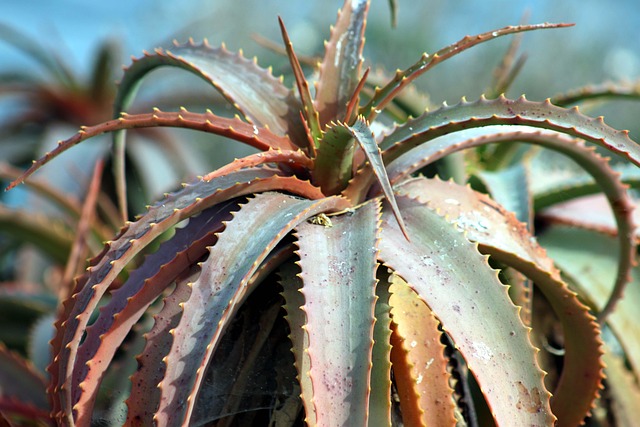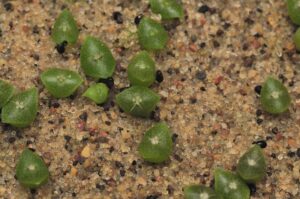Arizona is a veritable treasure trove of biodiversity, boasting a stunning array of cactus species that thrive in its arid landscapes. These remarkable plants have adapted exquisitely to the desert environment, showcasing unique features that not only contribute to their survival but also enhance the visual splendor of the desert. In this exploration of Arizona’s cacti, we will delve into the intricate adaptations, striking appearances, and ecological importance of some of the most fascinating cacti found in this sun-drenched state.
As one traverses the breathtaking landscapes of Arizona, the Saguaro cactus stands as a monumental symbol of resilience. Towering majestically, this iconic species can reach heights of up to 40 feet. Its distinctive shape, with upward-curving arms that seem to wave at passersby, embodies the essence of the American Southwest. Yet, its aesthetic allure belies a complex biological narrative. The Saguaro is not only known for its size but also for its intricate floral displays. In the spring, it blooms with glamorous white flowers, each as delicate and ephemeral as they are regal. These nocturnal flowers open at night, attracting pollinators such as bats and moths, while producing a sweet fragrance that enchants the desert night. The fruits that follow are equally captivating; during the summer, bright red, fleshy fruit ripens, providing sustenance to a myriad of birds and other wildlife.
In addition to the Saguaro, the Organ Pipe cactus is another breathtaking specimen worth mentioning. This plant typically grows in a dense formation of slender arms that rise from a central trunk, creating a captivating visual display reminiscent of organ pipes in a grand cathedral. Found primarily in the southern regions of Arizona, it thrives in well-drained soils, often in areas characterized by basalt rock formations. The unique structure of the Organ Pipe cactus allows it to capture and store moisture efficiently, crucial for survival in arid conditions. Its nocturnal blooms showcase resplendent white flowers that emit an alluring fragrance, enchanting pollinators and attracting nocturnal insects. Furthermore, the ripening fruit offers a sustenance source for native birds and mammals, demonstrating its ecological significance beyond aesthetics.
The Cholla cactus, known for its segmented, cylindrical arms, displays a fascinating characteristic: the ability to produce numerous spines that can easily detach during contact. This adaptation serves a dual purpose—protecting the cactus from herbivores while allowing it to propagate through these detached segments. Many species of Cholla exhibit stunning blooms, with flowers ranging from vibrant yellows to brilliant purples, lighting up the landscape in spring. The ‘Teddy Bear Cholla’, in particular, offers an inviting yet deceptive appearance. Its fluffy, golden spines appear soft and cuddly, inviting curiosity from onlookers, while in reality, they are a formidable deterrent against unwary creatures. The juxtaposition of beauty and danger encapsulated within the Cholla is a testament to nature’s complexity.
As we move further into the Arizona desert ecosystem, the Barrel cactus emerges as a true wonder of adaptation. With its spherical shape and distinctive ribs, this cactus can conserve water exceptionally well. Its bright yellow or red flowers, which bloom spectacularly in spring, attract a variety of pollinators, thus playing an essential role in the intricate web of desert life. The Barrel cactus also exhibits an intriguing behavior known as “thermoregulation.” During the hottest hours of the day, it can tilt slightly away from direct sunlight, minimizing exposure and preserving moisture. The spines, often long and fierce, serve to protect the plant from inquisitive animals that may attempt to consume its water-storing tissues. The striking silhouette of the Barrel cactus, combined with its colorful flowers, establishes it as an integral component of Arizona’s vibrant desert flora.
In exploring these varied species of cacti, one cannot overlook their crucial role in supporting local ecosystems. These plants are not merely decorative; they are lifelines for wildlife. Many desert animals, including bighorn sheep, jackrabbits, and a plethora of bird species, rely on cacti for food and cover. The flowers provide nourishment, while the structure of the cacti offers shelters, such as nesting sites for birds. The fruits serve as a vital food source, especially during the harsh summer months when other resources may be scarce. Furthermore, the diverse shapes and sizes of these cacti allow them to inhabit various niches, ensuring a balanced and biodiverse ecosystem.
In conclusion, the remarkable diversity of Arizona’s cacti not only enhances the state’s visual appeal but also underscores an extraordinary adaptive evolution. The iconic Saguaro, the statuesque Organ Pipe, the intriguing Cholla, and the resilient Barrel cactus each tell a unique story of survival and beauty within one of the harshest climates on Earth. As we marvel at their aesthetics and appreciate their ecological importance, let us continue to respect and protect these botanical treasures that symbolize the enduring spirit of the desert.





Leave a Comment